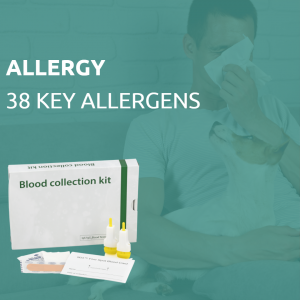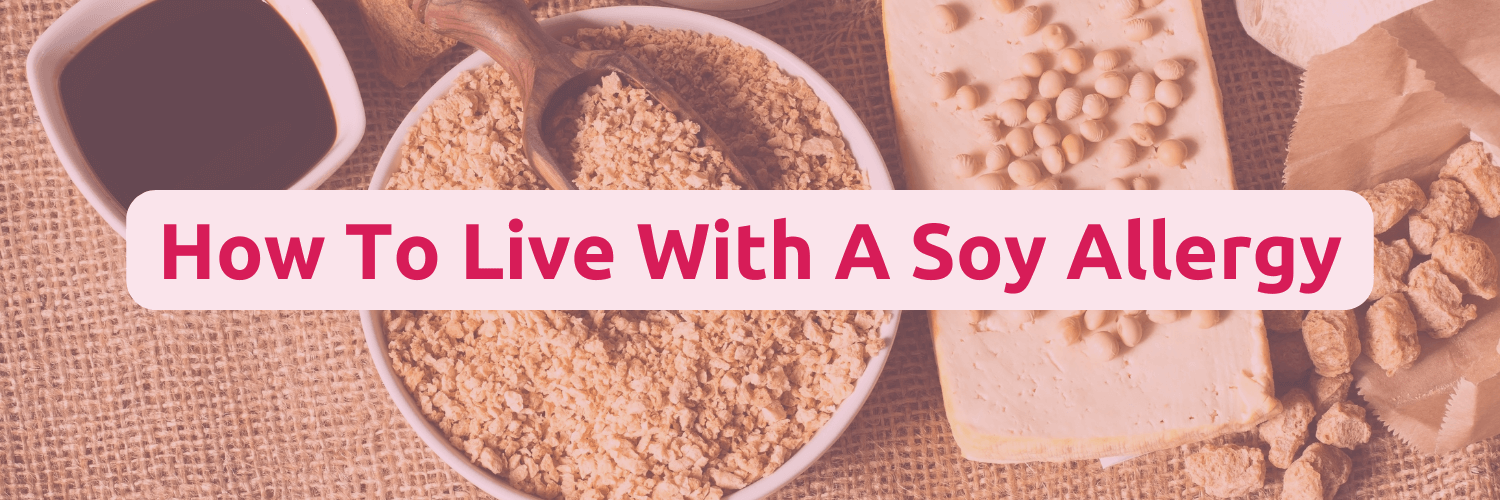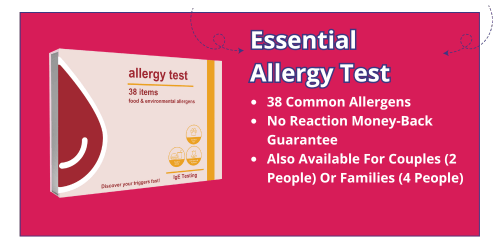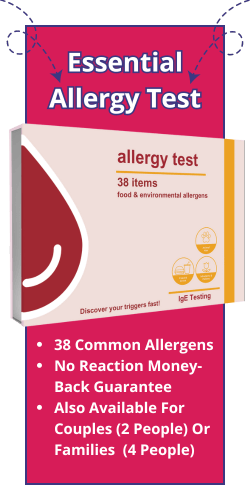
Bananas are a popular fruit around the globe. They are part of a healthy snack, breakfast, ice cream, and even smoothies. They are delicious and always a welcome fruit in any meal. Besides all of the advantages that come with bananas, the one I consider the biggest is that the fruit comes in its convenient packaging for easy snacking on the go, which is quite impressive. Most people even think bananas to be the best first solid food to introduce to toddlers, but you need to hold that thought, especially if there’s a family history of allergies. Infants or young children are at a higher risk of developing food allergies, and you need to talk with your child’s doctor when you’re thinking of introducing new foods to your baby. Those children with nut allergies may experience a reaction upon touching raw bananas.
Even though bananas are such unique fruits, they can also be dangerous, especially if one is allergic to them. The prevalence of banana allergy is in about 0.1-1.2% of the population. The symptoms of banana allergy can range from mild to severe, depending on the individual. In extreme cases, one can develop banana allergy symptoms simply by touching the fruit or its peel. Bananas are high in potassium, fibre, and natural sugars, so most people enjoy them. Still, it is best to find a potassium source elsewhere when suffering from a banana allergy. Read on to find out more about banana allergies, including symptoms and testing.
Causes of banana allergy
Banana allergy isn’t a result of the fruit but rather the protein within the fruit known as chitinase. Chitinase is also present in the sap of rubber trees. So, it’s common to find those with a banana allergy also have a latex allergy. What happens when you consume the fruit is that your body’s immune system detects the presence of chitinase and mistakes it for something harmful like bacteria. Your immune system then releases white blood cells and other components to fight this protein, and that’s when you witness those banana allergy symptoms.
Banana allergy symptoms

A female taking her temperature.
Symptoms and severity of banana allergy vary between individuals. Some people may be allergic to peel and fruit, while others are just allergic to the fruit. The symptoms of a banana allergy occur within a few seconds or minutes of consuming the fruit. Some people even experience mild symptoms, which are commonly known as oral allergy syndrome (OAS), which affects the mouth, tongue, throat, and eyes {1}. Sometimes they do occur even hours after consumption. Banana allergy symptoms include:
- Hives
- Itchy skin, eyes, mouth, and throat
- Stomach cramps
- Fever
- Swelling on the skin, lips, and tongue.
- Nausea or vomiting
- Diarrhoea
- Sneezing
In severe and rare cases, banana allergy can result in a life-threatening medical condition known as anaphylaxis. If you’re able to notice the symptoms of anaphylaxis can save a life. These symptoms include:
- Tightness in chest
- Difficulty breathing
- Wheezing
- Redness in the face and body
- Pale skin
- Loss of consciousness or fainting
- A sense of impending doom
- Low blood pressure
- Dizziness
- Abdominal pain
- Swollen throat
- Hoarse voice
These symptoms of anaphylaxis will often appear within 30 minutes of contact with a banana. In rare cases, these symptoms may take up to a few hours to show up. If someone next to or close to you is experiencing anaphylaxis, help them use their EpiPen and if they don’t have one, call an emergency medical service.
Sometimes a banana allergy occurs in conjunction with an allergy to other food types like pollen food syndrome. Pollen food syndrome is most likely to occur in those who already suffer from pollen tree allergy and hay fever. The allergens present in bananas are similar to those in tree pollen. This process of getting allergic reactions from similar foods is known as cross-reactivity. So, if you’re allergic to bananas, you could also be allergic to tree pollen and vice versa because of the similarity in the allergen present in these plants.
Banana latex allergy
Banana allergy is often connected to latex allergy because these two plants have common proteins or allergens. The same proteins that these two items share (chitinase) are also present in other fruits and nuts. Because of similar proteins present in both plants, just like with tree pollen, one will experience allergy symptoms. Latex is a naturally occurring product and is used to produce products like gloves, balloons, and condoms. About 30-50% of people with latex allergies also suffer from fruit allergies.
Other fruits that may also cause problems for those with a latex allergy include avocado and kiwi. Those with fruit or vegetable allergies often experience banana allergies too because of cross-reactivity. Even though it may sound awful, the symptoms of latex food syndrome are confined to the mouth, lips, tongue, throat, and gullet. The symptoms don’t move further down the body because the proteins cause the allergic reaction to get destroyed when the banana reaches the stomach.
A banana allergy can appear as a consequence of a latex allergy. Very few people are born with latex allergy, but they can develop it later in life due to exposure. There is a higher risk for some people to develop it more than others. For example, children born with spina bifida and other congenital disabilities often undergo multiple surgeries where the doctors use medical equipment with rubber which increases the risk of developing the allergy. This allergy can also be observed in people who often work where they have to use rubber items, like people working in the rubber industry. Some people can even react to the powder present in latex gloves even when not in direct contact.
Risk factors of banana allergy
As we’ve covered above, those suffering from hay fever and latex allergy may also be allergic to bananas because these plants have similar proteins present in them that cause allergies. You’re more likely to suffer from a banana allergy if you have:
- Asthma
- A history of atopic dermatitis or eczema
- A family history of allergies
- A history of oral allergy syndrome with any foods.
- An allergy to pollen, plants, and foods
Banana allergies in babies and kids
Symptoms of banana allergy in children are similar to those observed in adults. It is necessary to be cautious when introducing new foods to your infant, especially if you’re doing so after the seven-month mark. You should introduce allergen foods to your baby when they’re between 5 ½ and 7 ½ months because they can tolerate it better at this age rather than later on. Delaying the introduction of such foods only increases the risk of developing food allergies.
When introducing new foods to your infant, it is best to keep an eye out for any signs of a syndrome known as food protein-induced enterocolitis syndrome (FPIES). Children who suffer from FPIES show severe gastrointestinal upset symptoms like diarrhoea and vomiting. These symptoms show up between 2-3 hours after consuming an allergen. Many kids with FPIES can show early allergy to breast milk or formula.
FPIES is problematic as it causes allergies to most types of foods when you introduce new foods to children, especially common allergens like peanuts and eggs. Children with FPIES need proper treatment since this disorder can result in a very strict diet that could lead to malnourishment and dehydration. If your baby has other food allergies or eczema, they are prone to experiencing more food allergies to new foods.
Just because all this is scary, it doesn’t mean that you can’t introduce new foods to your child. It means that you should introduce allergens earlier on. But if you’re already past that mark and your infant has lots of food allergies, it is best to work with your child’s doctor. It is pretty rare for a child to experience a severe banana allergy. But if your family has food allergies, watch the signs closely. Kids with nut allergies may also react to touching or eating raw bananas, so you must watch out for such symptoms. The good news is that children often outgrow food allergies, so there’s hope that your child won’t experience symptoms forever {2}. However, food allergies acquired in adulthood will likely stick for a lifetime.
Testing for banana allergies
Living with allergy symptoms can be very daunting, and that’s why we encourage finding out which foods you’re allergic to so that you can focus on what to avoid in your diet. Your first action plan should be to visit your doctor and explain your symptoms, which will lead to them testing for any underlying conditions with similar symptoms. Once your doctor has excluded any other disease, then you need to order your Allergy Test.
An allergy test will help you know which foods you’re allergic to and remove them from your diet. If you think your child may have a food allergy, you need to discuss the matter with the paediatrician.
Banana allergy treatment
When you experience mild banana allergy symptoms, you need not worry because over-the-counter antihistamines may help you combat immediate allergy symptoms like itchiness, hives, watery eyes, and nose. Often, these symptoms pass without the use of medication. In rare cases, people develop anaphylaxis after consuming bananas. In such cases, it is wise to seek immediate medical attention because this condition can be life-threatening. If you experience such severe symptoms, your doctor will prescribe an EpiPen, which you’ll need to carry with you at all times.
Managing a banana allergy
When suffering from a banana allergy, avoiding the fruit at all costs is in your best interest. You must avoid certain toys and latex-based objects if you’re allergic to latex. Tips to stay safe include:
- Avoid anything banana-flavoured, foods, medications, or even lip balms. Keep off anything that lists banana as an ingredient.
- Avoid cross-reactive foods like avocado, celery, apple, chestnut, carrot, papaya, tomato, potato, and melon.
- Always check ingredients in smoothies and raw healthy desserts since bananas are a common ingredient in these.
- If you’re allergic to latex and banana, you must avoid contact with latex-based products like fitness equipment, condoms, gloves, dental terms, pacifiers, and some toys.
Final thoughts on banana allergy
If you’re suffering from a banana-latex allergy, it would be wise to avoid both items the best you can. Always read labels and ingredients when shopping to keep away from banana allergy symptoms. When eating out or at a friend’s, you need to specify your allergy so they’d consider not putting bananas in your food. You can consume many other fruits, and you should replace bananas. People who are allergic to bananas are also allergic to most foods, and that’s why we advise you to take an Allergy Test. It will help you determine which foods you need to eliminate from your diet. If you feel as if they’re too many, then you can talk with a nutritionist or doctor so you can devise a helpful meal plan to avoid malnutrition.
References
- Dayıoğlu, A., Akgiray, S., Nacaroğlu, H. T., & Bahçeci, S. (2020). The clinical spectrum of reactions due to banana allergy. Bagcilar Medical Bulletin.
- Gupta, R. S., Lau, C. H., Sita, E. E., Smith, B., & Greenhawt, M. J. (2013). Factors associated with reported food allergy tolerance among US children. Annals of Allergy, Asthma & Immunology, 111(3), 194-198.







